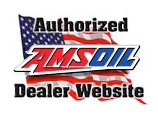11 Aug Classic-Car Season
Summer means hitting the local car shows and cruising the main drag in your classic car or hot rod.
For decades, Tetraethyllead (lead) was added to gasoline to reduce engine knock and help prevent valve-seat recession. Once lead’s negative effects became clear, regulators began phasing it out in the 1970s. Classic-car engines from the 1950s and 1960s were built with leaded gasoline in mind. Do they require a lead substitute?
Why Lead Was Added to Gasoline
• To increase octane which helps reduce engine knock
• To protect against valve-seat recession
Protects Against Pre-ignition
Gasoline’s octane rating indicates its ability to withstand compression before igniting. During engine operation, the piston travels up the cylinder and compresses the fuel/air mixture in preparation for ignition. Compression heats the mixture to help it ignite more easily and burn more completely. Compressing the fuel/air also maximizes the volume packed into the cylinder, which boosts power and efficiency. Engines with higher compression ratios typically put out more power.
If compressed, heated gasoline reaches its ignition point too soon, it will auto-ignite prior to the spark plug firing. This disrupts engine timing, reduces power and can damage the engine. It’s important to use gasoline with the correct octane rating for your engine to avoid pre-ignition. Higher-compression engines require higher-octane gas.
Chemists discovered in the 1920s that Tetraethyllead added to gasoline was a cost-effective solution to pre-ignition and helped engines run better.
Protects Against Valve Recession
Lead also emerged as an effective way to protect against valve-seat recession, which can occur under high-rpm, high-heat, high-load conditions. As the intensely hot exhaust valve hammers against the valve seat thousands of times per minute, the two components can momentarily fuse together in a process called “micro-welding.” Once the valve opens, the micro-weld tears apart. Multiply this by thousands of times and the valve seat deteriorates until the valve no longer seats properly. This leads to compression and power loss, in addition to catastrophic failure if the valve breaks off.
Hardened Valve Seats Introduced
By the mid-1970s, we’d become aware of lead’s negative effects on human health, the environment and automotive catalytic converters. As regulators began working to eliminate lead from gasoline, engineers began designing engines with unleaded gasoline in mind. To combat micro-welding engineers used hardened valve seats which are more resilient to valve recession.
Lead Substitutes Offer An Answer
To solve the problem, many enthusiasts add a lead substitute to their gasoline. Lead substitutes contain chemicals that form a sacrificial layer to inhibit micro-welds and protect valve seats.
If an engine is original and uses stock valve seats (i.e. non-hardened), Amsoil recommends using a lead substitute for added protection. This is especially true if your operating conditions border on “severe” territory. For a cast-iron, high compression-ratio engine of that era, it doesn’t take much to wind up the rpm, turn up the heat and operate in conditions that promote valve-seat recession. Using a lead substitute offers peace of mind that your classic car is protected.
AMSOIL DOMINATOR® Octane Boost = Excellent Lead Substitute
DOMINATOR Octane Boost works great as a lead substitute in classic cars. It contains MMT (Methylcyclopentadienyl manganese tricarbonyl), which is a metallic additive that creates a sacrificial barrier on the valve seats to help prevent recession and keep your engine running strong.
Amsoil Dominator boosts octane up to four numbers, which is important in older high-compression engines with leaded gasoline. Increases engine response and power in all two-and four-stroke gasoline-fueled engines. Just one treatment reduces engine knock, improves ignition and helps fuel burn cleaner
• Improves performance
• Maximizes power
• Reduces engine knock
• Excellent as a lead substitute in classic cars
Classic-Car Engines Need High-Zinc Oil
For best protection, Amsoil recommends using a high-zinc oil, Z-ROD® Synthetic Motor Oil, in these engines.
What Is High-Zinc Motor Oil?
Zinc dialkyldithiophosphate (ZDDP) is the most common zinc-based additive used as an anti-wear agent and corrosion and oxidation protection.
Reducing ZDDP has drawbacks. Older vehicles with flat-tappet camshafts and high-tension valve springs or other modifications that create high contact pressures, can suffer premature wear due to reduced ZDDP levels.
For the best protection, use high-zinc and high-phosphorus motor oil to offer extra protection for flat-tappet cams, lifters and other components.
When parts move during operation, any sliding or rolling motion takes place on top of or within the ZDDP anti-wear film, which reduces metal-to-metal contact which helps prevent wear
- are heat-activated
- provide wear protection for increased friction.
- Chemistry protects critical metal surfaces.


